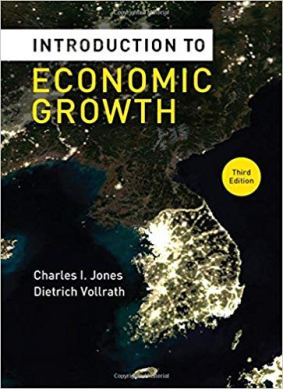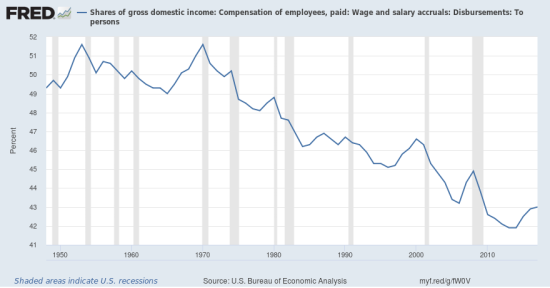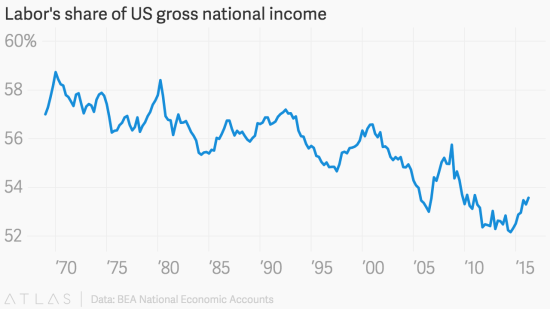Labor’s share — the ‘stylized fact’ that isn’t a fact at all According to one of the most widely used textbooks on mainstream theories of economic growth, one can for the United States “calculate labor’s share of GDP by looking at wage and salary payments and compensation for the self-employed as a share of GDP. These calculations reveal that the labor share has been relatively constant over time, at a value of around 0.7.” But is this “classic stylized fact” — that the labour share is relatively constant over time at around two-thirds — really true? One would, I guess, certainly have doubts after reading Piketty and taking part in the present discourses on economic inequality. Sometimes a little data can do wonders. So let’s have a look at a couple of
Topics:
Lars Pålsson Syll considers the following as important: Economics
This could be interesting, too:
Lars Pålsson Syll writes Schuldenbremse bye bye
Lars Pålsson Syll writes What’s wrong with economics — a primer
Lars Pålsson Syll writes Krigskeynesianismens återkomst
Lars Pålsson Syll writes Finding Eigenvalues and Eigenvectors (student stuff)
Labor’s share — the ‘stylized fact’ that isn’t a fact at all
 According to one of the most widely used textbooks on mainstream theories of economic growth, one can for the United States “calculate labor’s share of GDP by looking at wage and salary payments and compensation for the self-employed as a share of GDP. These calculations reveal that the labor share has been relatively constant over time, at a value of around 0.7.”
According to one of the most widely used textbooks on mainstream theories of economic growth, one can for the United States “calculate labor’s share of GDP by looking at wage and salary payments and compensation for the self-employed as a share of GDP. These calculations reveal that the labor share has been relatively constant over time, at a value of around 0.7.”
But is this “classic stylized fact” — that the labour share is relatively constant over time at around two-thirds — really true? One would, I guess, certainly have doubts after reading Piketty and taking part in the present discourses on economic inequality.
Sometimes a little data can do wonders. So let’s have a look at a couple of graphs that give us some:


The relative share between labour and capital has obviously not remained relatively constant over time. The trend during the last five decades has been that labour’s share has declined. The workers’ slice of the pie has decreased.
Time to rewrite the textbooks? Hope so!
